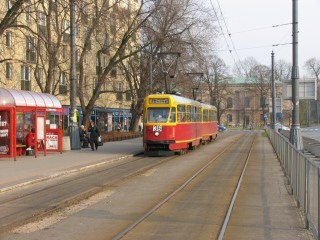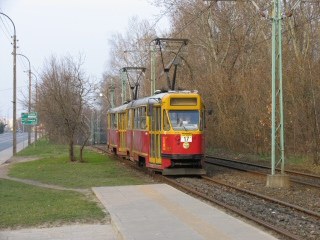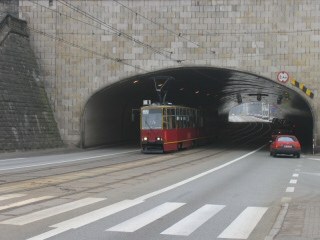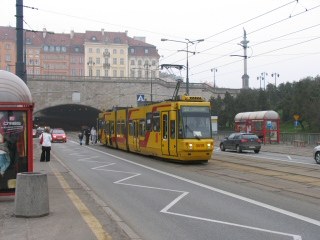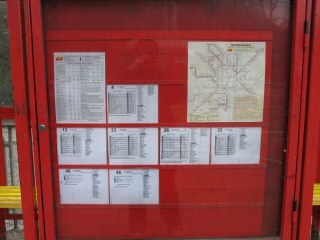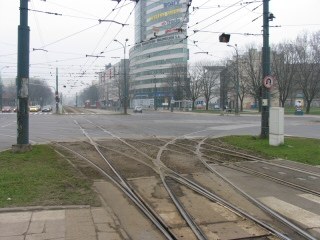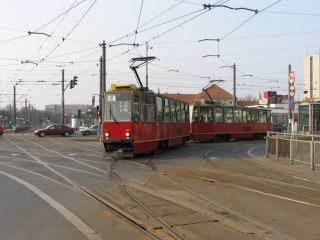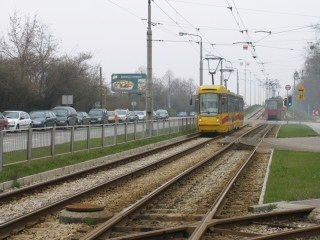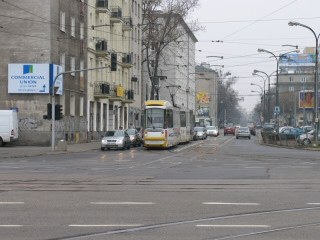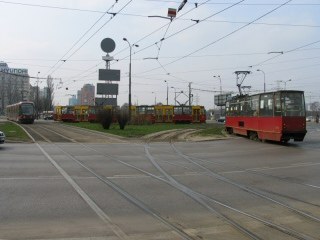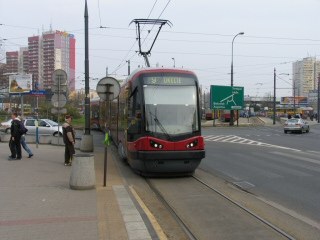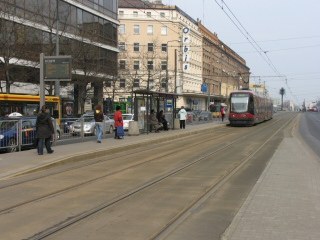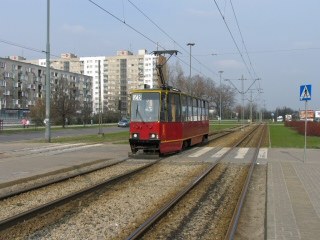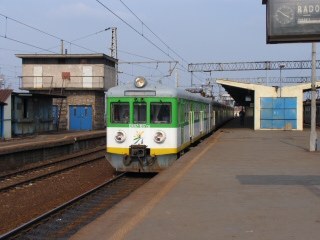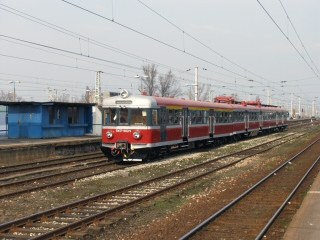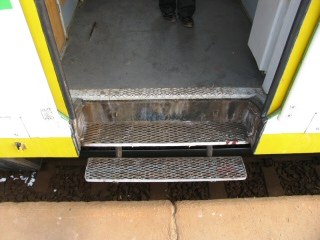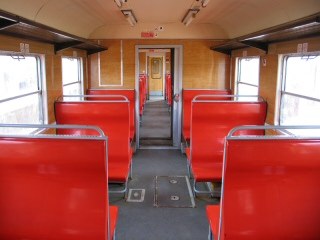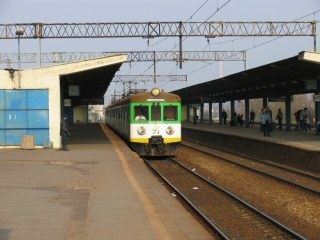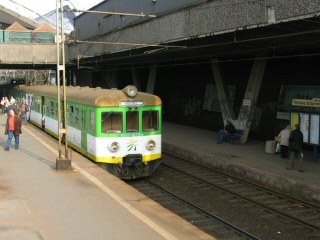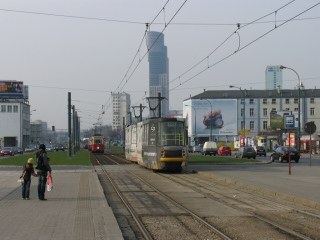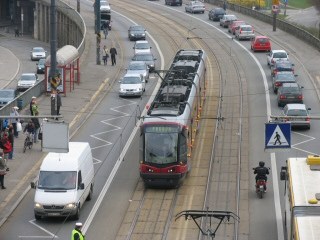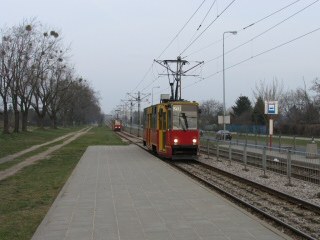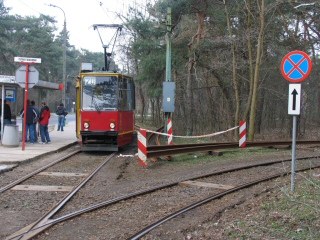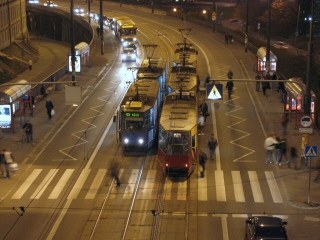budapest
other hungarian
close-up
lost rails
other countries
Warsaw, April 2008
I've always wanted to go to Poland, but it took me years to actually take a train there. First stop was Warsaw, the capital, which was celebrating the 100th anniversary of electric tram operation. The 120-kilometers-long tramway network of the city is very much like most large networks in former "Eastern Bloc" countries, with posh and neglected parts varying, but it seems they invest more in modernisation than in Budapest.
The most characteristic tram type in Warsaw is the Konstal 13N, a clone of the CKD Tatra T1, which itself was a licensed PCC-copy. These cars are quite spartan (and perhaps also a bit neglected), but they're loads of fun! Originally I did not know what to expect, but then it turned out I liked this beast very much!
The second cars in a double unit have a "truncated" driver's cab, where you can sit in and play tram driver ;)
A double-set leaving Zajezdnia »oliborz.
To the left: a 13N double-set in the city center near the main railway station. To the right: the modernised version of the 13N was the 105N, which was built in several modifications. Here we see a 105Na crossing the tunnel under the old city center.
The articulated 116Na has a low-floor middle section, a bit like the french TFS standard trams. Contrary to their young age, these vehicles seem to have a quite rough ride, and they're also noisy.
To the left: another 13N unit in Skierniewicka. To the right: the city has about 30 tram routes, and the information material in the stops is quite extensive.
Old Warsaw has been almost totally destroyed in World War II, and afterwards the city was rebuilt with wide, spacious roads. "Grand Union" junctions are not uncommon - here we see the one at Okopowa. To the right: near the stop Metro Ratusz Arsena│.
The boxy 4-axle 105Na is sometimes called an "aquarium" because of the huge windows.
Track quality is somewhat better in average than in Budapest, still, we saw quite a few hand-operated switches at the termini, which was a bit of a surprise. To the left: Ko│o, to the right: M│ynarska. The trams on the picture are modernised (rebuilt) 105Na cars.
The junctions of wide streets often house interesting track layouts. To the lefy: Plac Zawiszy, to the right: Rondo Wiatraczna.
The newest trams at that time were these PESA 120N low-floor units. Together with the visual information systems in the stops of Aleje Jerozolimskie (to the right), it certainly felt more modern than in Budapest!
The interior of a PESA car.
Unfortunately I thought they're a bit noisy.
To the left: one more photo of Aleje Jerozolimskie, and then we jump to the communist type housing area near Warszava Wschodna.
I also loved the old suburban EMU trains of type EN57 operating an S-Bahn-like network.
Ergonomy wasn't really of interest when these units were built: just look at the gap between the station platform and the car (left)! The interior (to the right) is also very simple.
But when they start, they had a beautiful electromotive sound!
Two more photos of these old beauties.
Street life with one of the new skyscrapers in the background (left), and a tram stop without traffic island (right).
Route 20 is interesting, because its outer end is single-tracked with passing loops. To the right, the outer terminus Boernerowo.
Of course "single track" does not necessarily mean slowness.
Schedules were well-prepared: we just arrived to one of the passing loops, and the tram going in the opposite direction was soon there. We received clearance for the next block, and continued our way. The signalling system was operated by the current collector of the vehicles.
To the left: 105Na cars are normally operated in double units, but we also saw a few three-car sets (left). To the right: the day was soon over, and I though maybe we should've come for more :)
Back to the top Back to the main page
